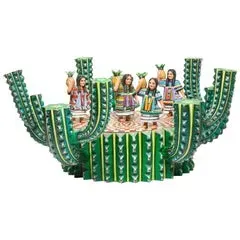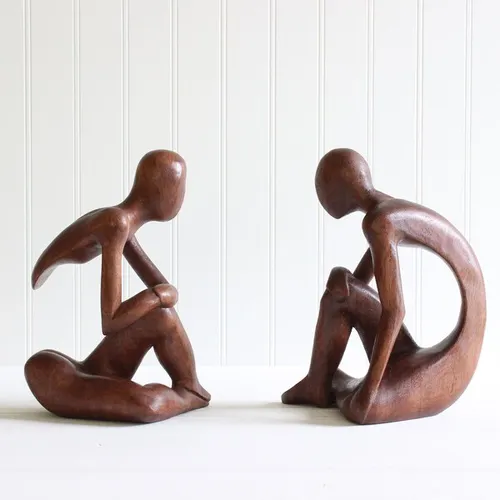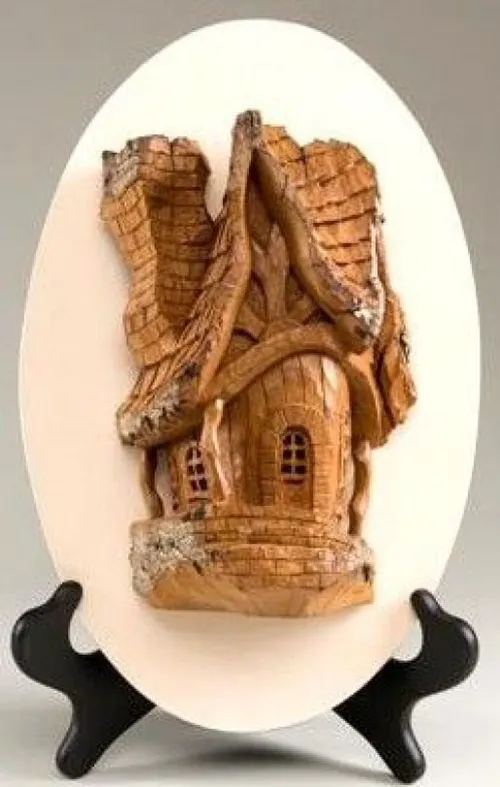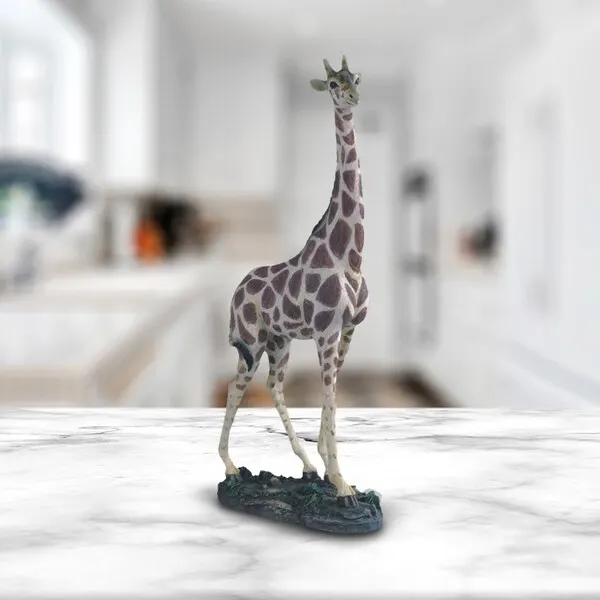Top Reasons for Whittling
1. Creative Expression
Whittling provides a unique outlet for creativity. The process allows individuals to transform a simple piece of wood into something beautiful, functional, or meaningful. Whether you are carving a small figurine, spoon, or decorative item, whittling encourages artistic expression. As you carve, you have the freedom to experiment with shapes, patterns, and textures, leading to endless possibilities. The sense of accomplishment that comes from turning a raw piece of wood into a work of art is highly fulfilling for many whittlers, making it an enjoyable and rewarding creative activity.
2. Mental Relaxation
Whittling is often seen as a form of relaxation, helping to clear the mind and reduce stress. The repetitive nature of carving requires focus and attention, which can be meditative. By concentrating on the rhythm of the carving process, whittlers can let go of external worries and engage in a calming activity. This mindfulness aspect makes whittling a great way to unwind, providing mental clarity and helping individuals relax after a long day. Many find it a therapeutic hobby, combining creativity with stress relief.
3. Improves Fine Motor Skills
Whittling requires precise movements and control of the carving tool, which can enhance fine motor skills. This skill development is beneficial for people of all ages, from children learning hand-eye coordination to older individuals maintaining dexterity. The act of carving involves steady, delicate motions, which help improve hand strength, coordination, and precision. Regular whittling can even help with conditions like arthritis, as it encourages the use of hand muscles and joints. As you carve more intricate designs, your skills naturally improve, resulting in more detailed and accurate carvings over time.
4. Low-Cost, Accessible Hobby
One of the appealing aspects of whittling is its low cost and accessibility. Unlike other hobbies that may require expensive materials or equipment, whittling requires minimal tools: typically a carving knife, a piece of wood, and a safe place to work. Softwoods like basswood, butternut, or pine are affordable and easy to find. This makes whittling a budget-friendly option for anyone looking to try their hand at woodworking or carving. Whether you’re at home or out in nature, whittling can be done with little preparation, making it an accessible hobby for individuals of all ages.
5. Sustainable and Eco-Friendly
Whittling is an environmentally friendly hobby, especially when using reclaimed or natural wood. By repurposing wood scraps or fallen branches, whittlers can reduce waste and give new life to materials that might otherwise be discarded. This sustainability aspect adds an ethical dimension to the craft, allowing individuals to create art while contributing to a greener planet. Many whittlers also choose to carve using local woods, minimizing their carbon footprint. Whittling is an excellent way to connect with nature and reduce waste, all while creating something beautiful and functional from natural materials.
6. Portable and Convenient
Whittling is a highly portable activity, making it easy to enjoy anywhere. Whether you’re at home, sitting in a park, or camping in the woods, whittling requires minimal equipment and can be done on the go. The compact nature of the tools makes it easy to carry a carving knife and small wood block in a bag or backpack. This portability allows individuals to carve whenever inspiration strikes or when they need a break from other activities. Whittling’s convenience is one of the reasons it has been a popular hobby for centuries, enjoyed by people from all walks of life.
7. Heritage Craft
Whittling has a long history and is an important part of many cultural traditions. For centuries, whittling has been a practical skill used to create tools, toys, and everyday items. Today, it continues to be a connection to past generations and a way to honor old craftsmanship techniques. For many people, learning how to whittle is a way of preserving a craft that has been passed down through the years. Whether creating traditional items like wooden spoons or modern sculptures, whittling allows people to keep this timeless art form alive.
Styles That Embrace Whittling ideas
1. Traditional Folk Art
Whittling has deep roots in folk art, with a focus on creating functional and decorative items from wood. In traditional folk art, whittlers often carve simple objects like spoons, walking sticks, and figurines that showcase rustic, charming designs. These pieces embrace a handcrafted, organic aesthetic with minimalistic details, often reflecting the personal touch of the carver. Folk art whittling often emphasizes the beauty of natural wood textures and the maker’s skill, preserving old-world techniques while producing pieces with practical use or as decorative keepsakes. This style can evoke nostalgia and connect to historical craftsmanship.

2. Nature-Inspired Carvings
Nature-inspired whittling focuses on creating carvings that reflect the beauty of the natural world. Artists often turn to animals, trees, flowers, and landscapes as subjects for their designs. Whittling in this style highlights the intricacy of nature’s patterns and forms, from the delicate wings of a bird to the twisting shapes of tree roots. By carving wood in these natural shapes, whittlers can celebrate the environment and create art that feels alive and connected to the outdoors. This style embraces the natural grains and imperfections of the wood, adding to the authenticity and charm of the finished piece.

3. Minimalist Whittling
Minimalism in whittling focuses on simplicity, precision, and clean lines. Whittlers who embrace this style often create geometric patterns or streamlined objects with an emphasis on balance and harmony. The goal is to carve elegant, understated pieces without excessive embellishment. Minimalist whittling encourages the carver to remove only what is necessary, allowing the natural form of the wood to shine through. This style is well-suited for those who enjoy the process of whittling as a meditative practice, focusing on each cut to create an intentional, refined outcome.

4. Whimsical and Playful Designs
Whittling can also take on a fun, whimsical style where the carvings are playful and imaginative. This approach often includes carving characters, fantasy creatures, or abstract shapes that invoke a sense of joy and creativity. Figures like smiling animals, quirky characters, or stylized objects with exaggerated features are common in this style. It allows the whittler to explore their artistic side while bringing humor and charm to the pieces they create. Whimsical designs often incorporate bright colors or intricate detailing, making them stand out as charming additions to home décor or as playful gifts.

5. Realistic Figurines
For those looking to challenge their whittling skills, creating realistic figurines is an advanced style that requires great attention to detail. This style embraces intricate carving techniques to capture lifelike representations of people, animals, and objects. Whether it’s a miniature figure of a person or a detailed animal carving, realistic whittling requires patience and a steady hand. Artists using this style often rely on the natural texture of the wood to enhance the realistic appearance, using shading and depth to bring the carving to life. This style appeals to those who enjoy detailed craftsmanship and want to create pieces that can be admired for their lifelike qualities.

Popular Whittling ideas
1. Wooden Spoons
Whittling a wooden spoon is a classic beginner project. It’s a simple design, requiring basic carving techniques to shape the bowl and handle. Softwoods like basswood or pine are ideal for making functional and beautiful spoons that can be used for cooking or decoration.

2. Whistles
Carving a wooden whistle is an easy and fun project that lets you create a small, functional item. You can make simple, traditional designs or experiment with more decorative shapes. Softwoods like pine or poplar work well for crafting whistles that produce a clear sound.

3. Animal Figures
Whittling small animal figures is a creative and rewarding project. You can start with basic animals like birds, fish, or dogs, and then progress to more detailed or complex designs. Basswood is ideal for these carvings, as it’s soft and easy to shape while still allowing for fine details.

4. Walking Sticks
Carving a walking stick can be a practical project that combines both function and artistry. You can add personalized details like intricate patterns, animal carvings, or even carve the entire stick from a single piece of wood. Strong hardwoods like oak or maple are perfect for this project.

5. Wooden Flowers
Carving wooden flowers is a delicate and creative project. You can whittle simple flowers like daisies, or more intricate ones like roses, depending on your skill level. This project allows you to practice shaping and detailing fine elements, and softwoods such as butternut work best for this kind of carving.

6. Letter Openers
A letter opener is a functional and elegant project to whittle. This tool requires a combination of carving and shaping skills, making it a great challenge for carvers looking to expand their skills. You can make simple or ornate letter openers, depending on your preference.

7. Wooden Bowls
Whittling small bowls or cups is a challenging yet rewarding project. The process involves hollowing out the center while shaping the edges. Softwoods like pine or aspen are ideal for beginners, but if you’re looking for a more durable and polished finish, hardwoods like cherry or walnut are great options.

8. Figurines
Whittling small figurines can be a fun and creative project, allowing you to experiment with shapes and forms. You can carve people, animals, or abstract figures. Start with basic shapes, and as you gain confidence, you can move on to more detailed and intricate carvings.

Quick Tips for Embracing Whittling ideas
1. Start with Softwood
If you’re new to whittling, begin with softwoods like pine, cedar, or basswood. These woods are easier to carve and less likely to cause fatigue or frustration. They also require less force, which is perfect for beginners still learning the nuances of control and precision.
2. Use the Right Tools
Invest in a good-quality carving knife or whittling tool. A sharp blade is essential for clean cuts and smoother carvings. Beginners should also have a thumb guard or carving glove to ensure safety while working on intricate designs. As you progress, consider adding specialized tools such as gouges or chisels for more detailed work.
3. Practice with Simple Shapes
Before diving into complex projects, practice carving basic shapes like spoons, small figures, or geometric patterns. This will help you build confidence and skill with the carving knife. Start with straightforward projects to learn control, then gradually move on to more intricate designs.
4. Carve with the Grain
Always carve with the grain of the wood to avoid unnecessary splits and rough cuts. Recognizing the wood grain direction allows for smoother cuts and ensures that the piece doesn’t break unexpectedly. It’s crucial to follow the grain for better control and cleaner results.
5. Take Breaks and Work Slowly
Whittling requires patience and focus, so take breaks frequently. Avoid rushing through a project; slow, deliberate carving will help maintain precision and reduce mistakes. Taking your time also ensures that you stay relaxed, reducing the risk of accidents.
6. Create a Comfortable Workspace
Set up a comfortable and well-lit workspace to enhance your focus. A sturdy workbench or carving block is essential for stability. Ensure that you have enough light to see the details of your work, and make sure the wood is securely positioned so you can carve safely.
7. Use a Pattern or Template
If you’re new to whittling, consider using a pattern or template to guide your carving. It can help you stay on track and ensure your shapes are symmetrical. Templates are especially useful for beginners who may find it challenging to freehand more intricate designs.
8. Focus on Safety
Always prioritize safety while whittling. Work in a space where you have enough room to maneuver your tools, and never rush through cuts. Keep your hands steady and away from the carving knife’s path. Using a carving glove or thumb guard can also protect against slips.
9. Embrace Mistakes as Learning Opportunities
Mistakes are part of the learning process. If a carving doesn’t turn out as expected, don’t be discouraged. Analyze what went wrong and use it as an opportunity to improve your technique. Over time, you’ll develop the skills needed to correct errors and refine your work.
10. Experiment with Different Styles
Once you’re comfortable with basic whittling techniques, experiment with different styles, such as figurines, abstract shapes, or even texturing techniques. Whittling offers a wide range of possibilities, and trying different styles can keep your practice fresh and enjoyable.
Conclusion
whittling is a rewarding craft that offers endless opportunities for creativity and personal expression. Whether you’re a beginner or an experienced carver, the key to success lies in patience, practice, and the right tools. Starting with softwood and basic shapes allows you to build your skills gradually, while focusing on safety and comfort ensures a positive and productive carving experience. Embracing different styles, such as folk art, nature-inspired designs, and minimalist carvings, can keep the process exciting and help you explore various techniques. Whittling not only offers a way to create beautiful objects but also provides a sense of fulfillment that comes from handcrafting something with your own hands. As you continue to carve and refine your skills, don’t be afraid to experiment with new ideas and challenge yourself with more intricate projects. Mistakes are part of the journey, and each one offers valuable lessons that contribute to your growth as a whittler. Above all, whittling is a craft that fosters mindfulness and relaxation, making it a perfect hobby for those seeking both creativity and stress relief. Whether you create functional objects or artistic pieces, whittling allows you to connect with nature and your inner artist in a meaningful way.